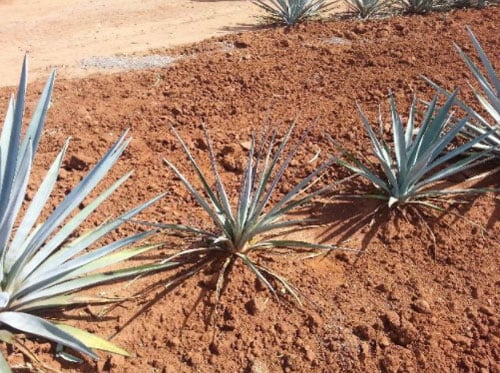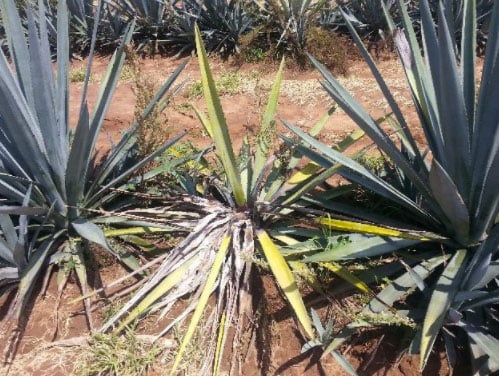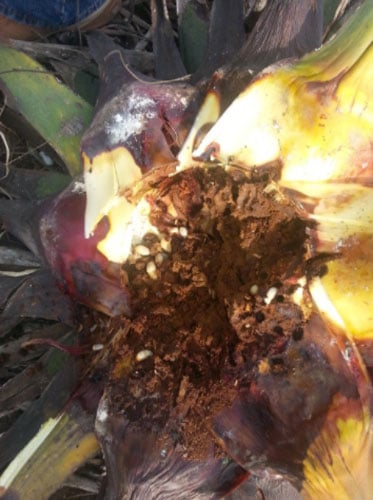
To manage agave pests and diseases, we always keep our main objective in mind: to produce the best quality agave because the best agave produces the best tequila––tequila with the highest quality of standards, and our characteristic notes of fresh agave.
Agave’s phytosanitary problems can result in great losses, most of all because it is difficult to detect diseased plants until the moment in which the problem can no longer be remedied.

For this reason, it is important to see disease management from a systemic perspective, taking into consideration all the factors involved: plant, environment, workers and the equipment with which these problems may be resolved. This is what we called Field Development Management.

Generate basic information about agave crops
Since 2002, we have worked, and continue to work, towards gaining knowledge regarding habits, life cycles and environmental conditions that favor the presence of any pests/diseases that target agave, in order to know when and with what management techniques phytosanitary problems should be ameliorated.
These efforts have been made within the company, coordinated with various research institutions, such as INIFAP which by its abbreviation in spanish means (Instituto Nacional de Investigaciones Forestales, Agrícolas y Pecuarias) and other universities/research centers. Our knowledge has allowed us to design effective management techniques and has simultaneously formed a more amicable working environment.
Integration of agave crop management
There is an ongoing search for integrated crop management techniques, with practices that are not only focused on the use of agrochemicals, but prioritize the use of cultural and preventative measures.
The following factors play a significant role in the measures that have been considered to reduce the impact of phytosanitary problems:
- A location in which there is minimal pressure of phytosanitary problems, and a soil analysis that determines which fertilizers should be used
- A location that has little presence of disease to serve as a “donor” crop of agave shoots (agave crops with short lifespans)
- Selecting the best agave shoots, considering diameter and health; eliminating diseased plants at the right time; and the use of cattle for weed control
- Providing compost, as well as fertilizer, to all the crops in their early years because using both nutrient sources will prevent loss of nutrients due to leaching

Using agrochemicals for agave crops
When deciding to use an agrochemical for phytosanitation management, all recommended products that meet legal requirements should be considered.
Evaluations should be conducted in order to determine the effectiveness of these products for the problem that you’re experiencing. After these evaluations, you should choose the product that presents the lowest risk for the employees that work in close contact with the chemicals, and has the smallest impact on the environment. The cost of the product should be considered last.
Research your options
There are products with a vegetable origin or microorganisms that are used for other crops. Although results have not yet been obtained in regards to a majority of these products, we are continuously on the lookout for products that can be easily incorporated into our agave crop management, because we know that they have a very minimal effect on the environment.
Technical aspects of plague and/or disease management will be explored deeper in future blogs. If you are interested in getting to know more about phytosanitary management, I will be writing more about them in future blogs.
Come and visit Casa Sauza and see for yourself the modernization of our production processes, which deliver the purest tequila that you will find in the market.
.png?width=50&height=50&name=10.CS-Redondo%20(1).png)
